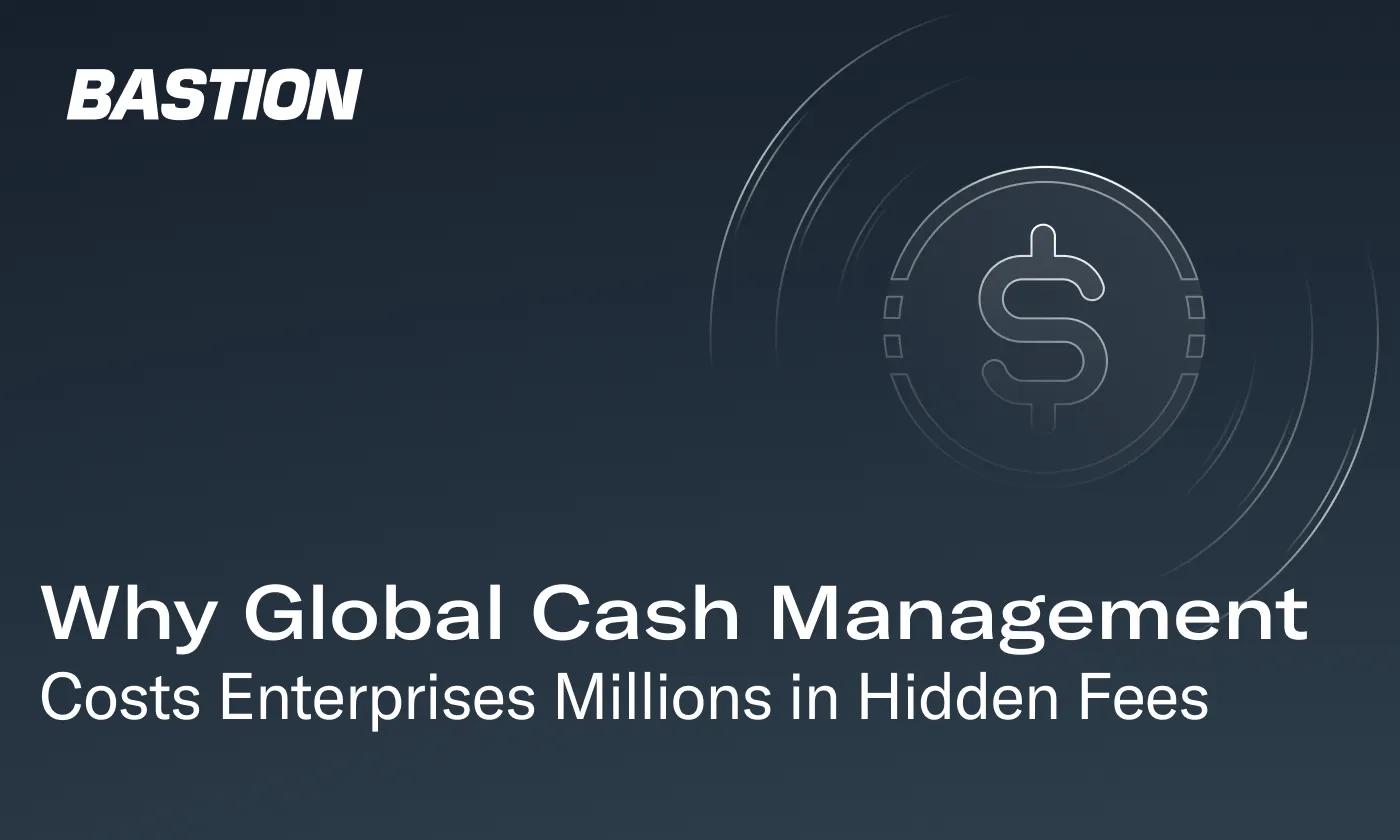
In 2025, global cash management remains fragmented because payment systems within and across countries are not fully connected. This lack of integration costs multinational companies millions of dollars every year. Some costs are visible, such as wire transfer fees and FX spreads, while others are less obvious, like the expense of trapped capital. Treasury and finance teams can reduce some visible fees through efficiency efforts. These steps, though, do little to offset the larger impact of working capital tied up in slow correspondent banking chains and inefficient global payment systems.
Quantifying the Financial Impact of Inefficiencies
Every wire fee, correspondent bank fee, and FX spread acts like a tax on enterprise growth. Yield losses from trapped funds add further strain.
According to the World Bank’s Q1 2025 remittance report, bank transfer fees average 6.49%, globally, up from 6.26% in Q4 2024. Even small percentage fees translate into millions of dollars at the enterprise level when multiplied across hundreds or thousands of daily transactions.
Typical fees include:
- Sending bank fees
- Currency conversion fees
- Correspondent bank fees
- Receiving bank fees
How the Financial Float Costs Enterprises
Beyond fees, settlement delays can cost even more. Funds often sit idle in correspondent banking networks for days, limiting liquidity and earnings potential. What appears to be routine cross-border friction is, in practice, a significant financial drain.
Oxford Economics and FISGlobal’s joint study estimates that financial inefficiencies can cost a single enterprise nearly $100 million per year. Highest costs of financial disharmony occur in the United States ($108 million) followed by Singapore ($95.7 million), and the UK ($89.6 million).
Surveyed organizations report that the most friction occurs when money is moving between accounts and entities (51%), nearly double the challenges seen when money is put to work (28%) and more than double than when money is stored (21%).
Evolution Towards Efficient Alternatives
In 2017, firms paid about $200 billion globally in international payment fees. McKinsey and SWIFT reported that these costs were roughly split between bank transaction fees and FX charges. These accounted for 27% of worldwide banking costs, growing by about 6% each year. While banks benefited, enterprises have carried the burden.
Exponential cross-border payment growth has occurred since 2017. The Bank of England estimated a $100 trillion-plus increase in total cross-border payments from that year through 2027, triggering even more correspondent and FX fees.
So, enterprises relying upon legacy systems face mounting costs and increasing amounts of lost opportunities for yield. This puts firms that cannot optimize as quickly as their peers at a competitive advantage.
A Look at SWIFT
When SWIFT launched in 1973, it replaced Telex and modernized global bank communications. Within ten years, central banks began participating in the SWIFT network. Fifty years post-launch, it processes $150 trillion in annual interbank payments around the world. Yet its success largely depends on enterprises paying multiple layers of fees.
Bypassing the well-established and deep-rooted SWIFT might seem like financial science fiction, but a more efficient alternative is emerging. Blockchain-based stablecoins may reduce settlement times from days to minutes, giving treasury teams near real-time control and improving working capital.
SWIFT is reading the technology tea leaves. In 2025, this entity began digital asset pilot programs with organizations that included the Hong Kong Monetary Authority and Banque de France. This allowed these financial institutions to participate in the European Central Bank’s exploration of new wholesale payment technologies. This signals the traditional industry’s acknowledgment of a new era of faster, more transparent settlements.
Streamlined Payment Rails With Stablecoins
McKinsey’s July 2025 report identifies stablecoins as a turning point in global payments. Although stablecoins currently represent only 3% of the nearly $200 trillion global cross-border payment ecosystem, $32 trillion in stablecoin transaction volume occurred in 2024 with key drivers of continuing adoption including:
- The U.S. GENIUS Act regulating stablecoins (July 2025)
- Forecasts suggesting stablecoins could surpass legacy systems within a decade
- Advances in compliance, security, and scalability
Secure, Compliant, Mature Stablecoin Infrastructure
Bastion technology provides the tools for enterprises to:
- Launch and scale regulated stablecoin solutions with built-in compliance
- Securely store stablecoins in wallets with embedded KYC
- Conduct cross-border transfers with fiat on/off ramps (where available)
- Settle payments in more than fifty countries
- Earn yields up to ~4% on holdings
The future of enterprise finance is no longer theoretical. It is here. Let’s talk.
Disclosures:
Dibbs Trust Company LLC is chartered as a limited purpose trust company by the New York State Department of Financial Services to engage in virtual currency business. Its application to issue stablecoins is pending.
~4% interest is subject to change based on market conditions at the time of issuance.
Availability of services may vary by jurisdiction and is subject to applicable regulatory requirements.
